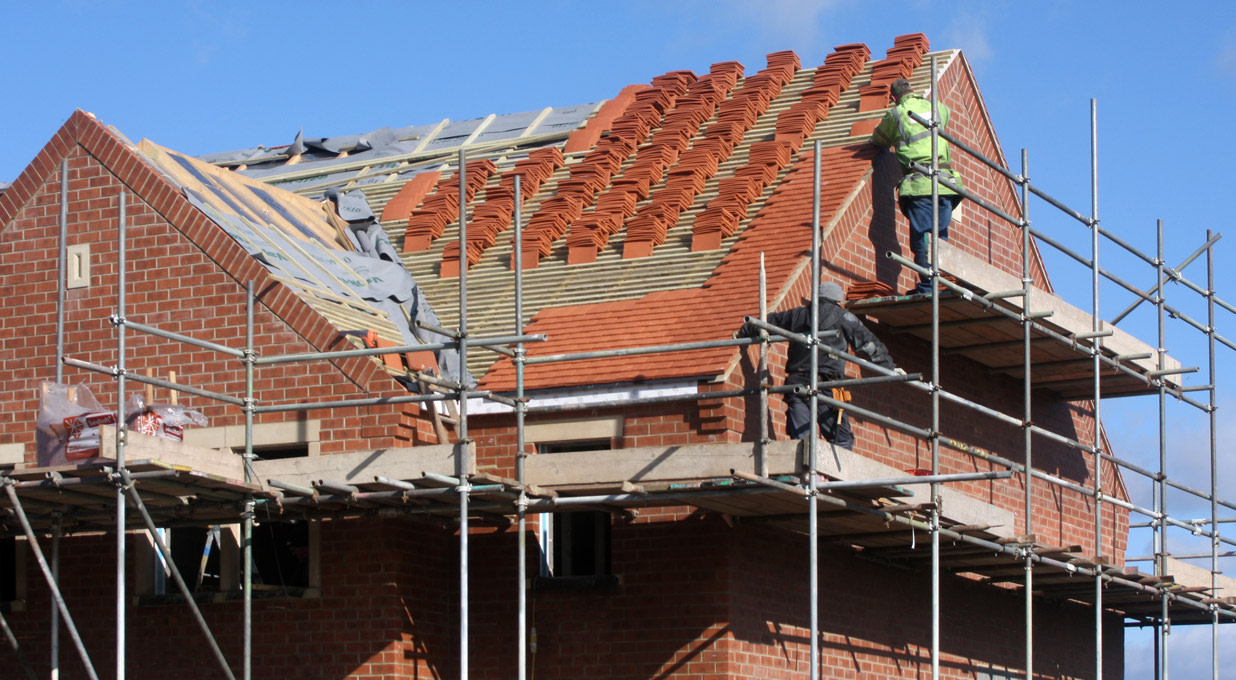Taylor Wimpey’s weekly net private sales rate was 0.77 in the year to 27 April 2025, up from 0.74 in the prior year. But cancellation rates worsened in the period, up from 13% to 16%.
The order book rose from £2.1bn to £2.3bn, representing 8,153 homes (2024: 7,742). Build cost inflation has returned to a “low level” in the period.
Full-year guidance has been maintained, with new home completions expected to be in the 10,400-10,800 range. Operating profit guidance of £444mn has also been reiterated.
2024’s final dividend of 4.66p per share is down from 4.79p in the prior year.
The shares fell 3.0% in early trading.
Our view
Taylor Wimpey had a decent start to 2025, with the Spring selling season progressing in line with group expectations. There was some softness in the south relative to the rest of the country, but overall sales still edged higher over the period, and profitability looks set to improve as the year progresses.
With operations focused in the UK, the group should be relatively insulated from the direct impact of tariffs. But if they cause a global economic slowdown, Taylor Wimpey could see demand weaken.
For now though, the group’s not seen any notable changes in its lead indicators. UK inflation looks largely under control, and there’s cautious optimism that lending rates will creep lower this year. Falling rates are a tailwind for buyers, increasing their purchasing power. A potential homebuyer with a £1500 monthly mortgage budget has over 10% more borrowing capability at 4.0% than 5.0%.
The landbank is a particular strength for Taylor Wimpey, which has a significant number of plots awaiting detailed planning permission. If the new government delivers on its promise to ease planning permission, more supply is likely to come online, and Taylor Wimpey should start to see the benefit.
The balance sheet is in great shape too, arguably one of the strongest in the sector. That provides plenty of cover for the generous prospective dividend yield of 8.1%. But remember, dividend policies can change on a dime. No dividends are guaranteed.
The current dividend policy is linked to asset value rather than earnings. That means investors are more likely to receive a base level of dividend even in a downturn. Given the improving outlook, we’d be keen to see this policy changed to favour a more even split between dividends and share buybacks. This would likely bring more value to shareholders given the group’s trading some way below book value.
Regardless, there are still challenges to navigate.
The sector's facing ongoing labour and supply chain challenges. That’s starting to move build cost inflation on an upward course again, which could put pressure on margins. There’s also the weakness of pricing in the South. With rates proving fairly sticky, buyers in this region are likely to remain hesitant to sign the dotted line on a new home.
There’s still plenty of uncertainty ahead, and tariffs have the potential to weigh on the economy and weaken demand. But for now, buyer activity is healthy, and with a longer-term lens, the valuation remains attractive. Given its robust financial position and a strong pipeline of land, Taylor Wimpey looks in as strong a position as it could be for now.
Environmental, social and governance (ESG) risk
Most housebuilders are relatively low risk in terms of ESG, particularly for those in Europe. However, there are some environmental risks to consider, from direct emissions to the impact of their buildings on the local ecology. The quality and safety of their buildings is also a key risk.
According to Sustainalytics, Taylor Wimpey’s management of ESG risk is strong.
The group has a strong greenhouse gas reduction programme in place and reports on scope 1, 2 & 3 emissions. There are clear deadlines in place and a renewable energy programme has also been implemented. While the group uses recycled materials, there’s no disclosure of the percentage used.
Taylor Wimpey key facts
All ratios are sourced from LSEG Datastream, based on previous day’s closing values. Please remember yields are variable and not a reliable indicator of future income. Keep in mind key figures shouldn’t be looked at on their own – it’s important to understand the big picture.
This article is not advice or a recommendation to buy, sell or hold any investment.No view is given on the present or future value or price of any investment, and investors should form their own view on any proposed investment.This article has not been prepared in accordance with legal requirements designed to promote the independence of investment research and is considered a marketing communication.Non - independent research is not subject to FCA rules prohibiting dealing ahead of research, however HL has put controls in place(including dealing restrictions, physical and information barriers) to manage potential conflicts of interest presented by such dealing.Please see our full non - independent research disclosure for more information.


